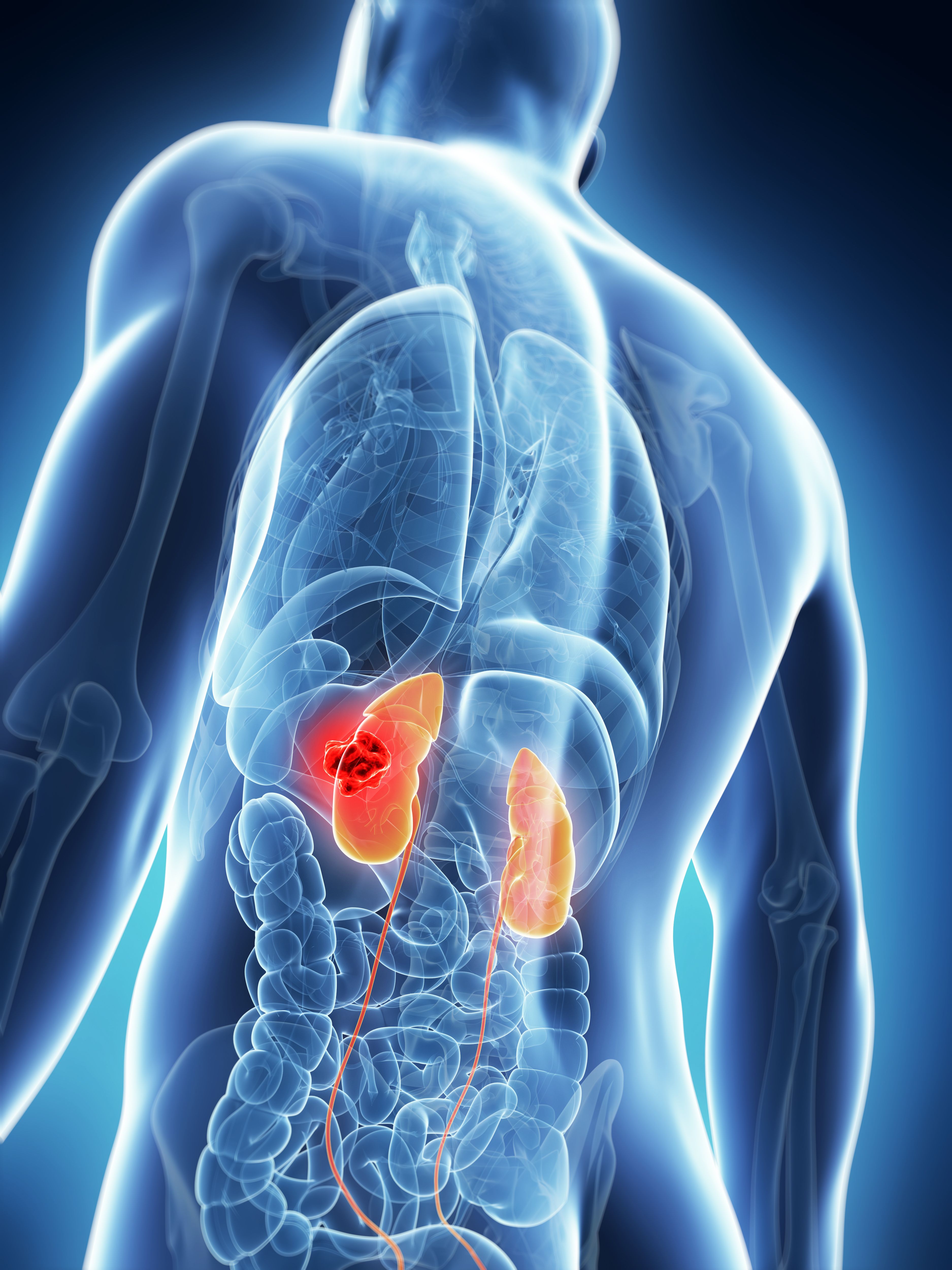Pembrolizumab Prolongs DFS Across Clear Cell RCC Disease Subgroups
Findings from the phase 3 KEYNOTE-564 trial support adjuvant pembrolizumab following nephrectomy as a standard-of-care treatment for patients with clear cell renal cell carcinoma.
Findings from the phase 3 KEYNOTE-564 trial support adjuvant pembrolizumab following nephrectomy as a standard-of-care treatment for patients with clear cell renal cell carcinoma.

Treatment with adjuvant pembrolizumab (Keytruda) improved disease-free survival vs placebo among patients with clear cell renal cell carcinoma (RCC) regardless of disease risk or disease stage, according to data from an exploratory analysis of the phase 3 KEYNOTE-564 study (NCT03142334) that was presented during the 2023 Kidney Cancer Research Summit (KCRS).
The estimated median disease-free survival (DFS) for patients with The University of California Los Angeles Integrated Staging System (UISS) intermediate-risk disease was not reached (NR) in either the pembrolizumab arm or the placebo arm (HR, 0.65; 95% CI, 0.48-0.88). The 24-month DFS rates in each respective arm were 81.5% vs 72.4%.
For those with UISS high-risk disease, the estimated median DFS was NR (95% CI, 25.8-NR) in the pembrolizumab arm vs 40.5 months (95% CI, 19.4-NR) in the placebo arm, with 24-month DFS rates of 65.0% vs 55.9% in each respective arm (HR, 0.77; 95% CI, 0.49-1.20). The estimated median DFS among patients following nephrectomy and complete resection of metastasis was NR (95% CI, 25.7-NR) with pembrolizumab vs 11.6 months (95% CI, 5.6-NR) with placebo, and the corresponding 24-month DFS rates of 78.4% vs 37.9% in each arm (HR, 0.28; 95% CI, 0.12-0.66).
The DFS and distant metastasis-free survival (DMFS) benefits observed with pembrolizumab in the intent-to-treat population extended across all subgroups based on UISS disease risk; American Joint Committee on Cancer (AJCC) primary tumor stage and lymph node involvement. The investigators advised interpreting these data with caution based on the small sample size of some patient subgroups and noted that they did not perform formal statistical testing for the post hoc analysis.
In this subgroup analysis of the double-blind randomized phase 3 KEYNOTE-564 study, investigators assessed whether UISS risk groups and disease stage correlated with the efficacy of adjuvant pembrolizumab among those with clear cell RCC. Patients were randomly assigned 1:1 to receive either 200 mg of pembrolizumab (n = 496) or matched placebo (n = 498) intravenously once every 3 weeks for up to 17 cycles, which is about 1 year.
The end points of this post hoc exploratory analysis were DFS and DMFS across patient subgroups, which investigators estimated using the Kaplan-Meier method.
Patients with histologically confirmed clear cell RCC and no receipt of prior systemic therapy were eligible for enrollment on the trial. Those with an intermediate-high risk of recurrence following nephrectomy, complete resection of metastasis following nephrectomy, and an ECOG performance status of 0 or 1 were also able to enroll.
The median follow-up was 30.1 months (range, 20.8-47.5) as of the data cutoff date of June 14, 2021.
In the pembrolizumab and placebo arms, respectively, most patients had UISS intermediate-risk disease (73.6% vs 75.1%) followed by UISS high-risk disease (20.5% vs 19.1%) and complete resection of metastasis following nephrectomy (5.9% vs 5.8%). Most patients in each respective arm had AJCC stage III disease (87.3% vs 88.0%) followed by stage IV (8.3% vs 8.2%) and stage II disease (4.4% vs 3.8%).
Across the UISS intermediate-risk, UISS high-risk, and completely resected metastasis following nephrectomy groups in the pembrolizumab and placebo arms, male patients made up anywhere from 61.0% to 82.8% of the population. Additionally, 34.0% to 99.4% of patients had an ECOG performance status of 0, and 91.6% to 96.8% underwent radical nephrectomy.
Across the UISS risk subgroups, 24.1% to 95.5% of patients had a primary tumor size of T3. Additionally, anywhere from 37.9% to 51.7% of patients had grade 3 tumors, and 71.0% to 100.0% had N0 lymph node staging.
Reference
Choueiri TK, Tomczak P, Park SH, et al. Adjuvant pembrolizumab for renal cell carcinoma across UCLA integrated staging system risk groups and disease stage: subgroup analyses from the KEYNOTE-564 study. Presented at the 2023 Kidney Cancer Research Summit; July 13-14, 2023; Boston, MA. Abstract 69.